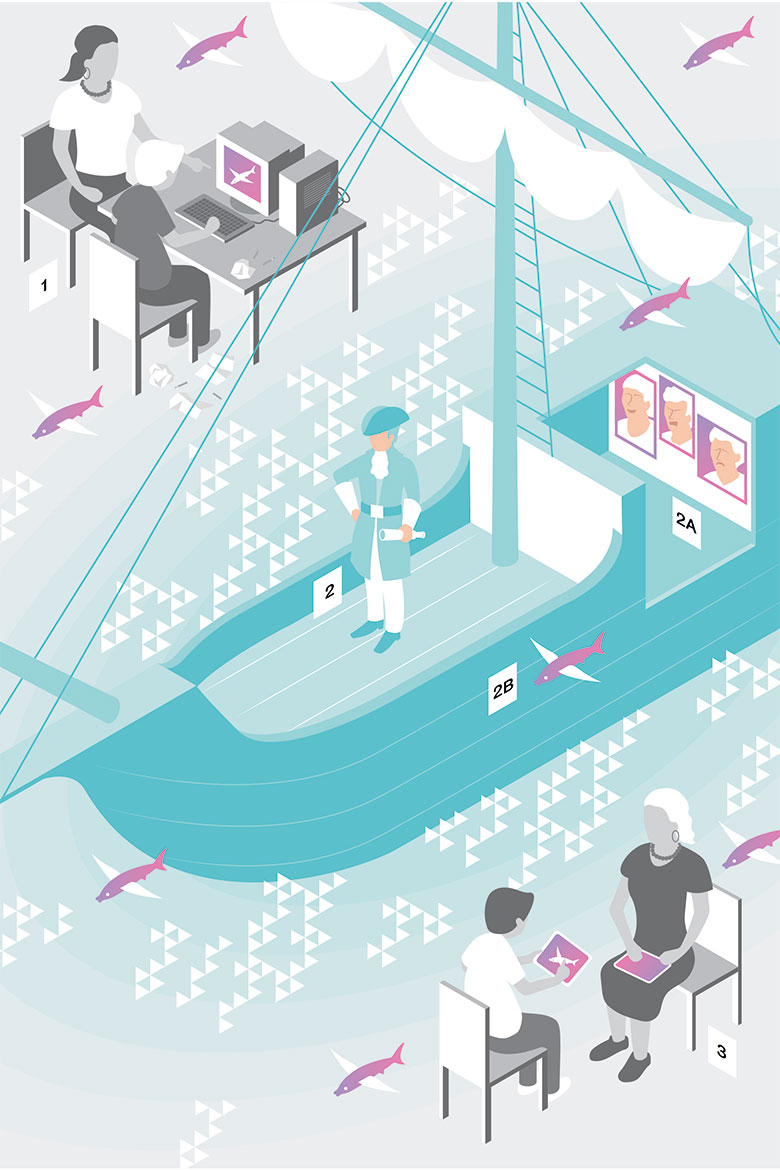How it works
A treasure hunt for helpful thoughts
The computer game Treasure Hunt introduced children to the basics of cognitive behavioural therapy. It was an innovative prototype, but no one followed up on it.
The computer game Treasure Hunt introduced children to the basics of cognitive behavioural therapy. It was an innovative prototype, but no one followed up on it.

Illustration: ikonaut
3 — The background: No sudden spurt of successor programs
‘Treasure Hunt’ is still downloaded by therapists, but this pioneering program didn’t have any successors. It remains an innovative prototype. Brezinka says: “Investors want to hear that you can cure a depressed child in three months”. If you can’t demonstrate clear results, there isn’t any interest. And if it were going to achieve the appeal of modern commercial games, it would need an investment of several hundred thousand francs. But the game was never intended to make psychotherapy more economical. It just wanted to provide evidence-based support.
2B Towards the end, they have to distinguish between helpful thoughts and unhelpful thoughts – what we call negative automatic thoughts in adults. These become flying fish that zip across the deck, and you have to shoot them down before you can classify them correctly.
2A The Treasure Hunt runs chronologically and on different levels. One level explores how to recognise the four basic emotions: fear, anger, joy and sadness. Portraits are hanging on the walls of the captain’s cabin. The child on the Treasure Hunt has to find out what the person in the picture is thinking, and how they feel.
2 — The solution: ordering ideas playfully
The kids go on a treasure hunt with a captain and a sailboat. They learn – in the presence of an expert – the basics of cognitive behavioural therapy, which is based on the idea that the way we think has a big impact on our behaviour.
1 — The problem: kids don’t like pencil and paper
Boys often find the methods and means of psychotherapy boring. Pencils and paper don’t motivate them. This is why the child psychologist Veronika Brezinka from the University of Zurich launched a behavioural therapy computer game for 9-13 year-olds back in 2008. It was intended for children who were anxious and depressed, as well as for those demonstrating aggressive behaviour.
